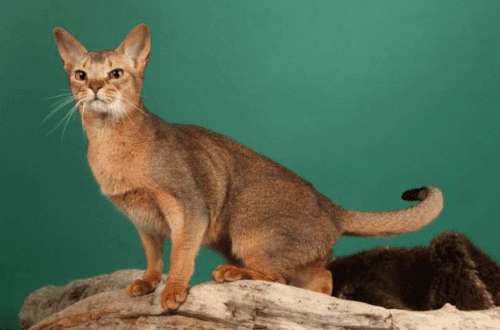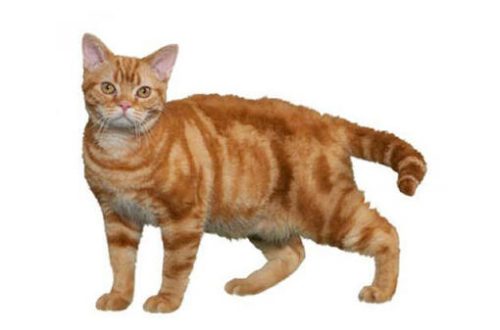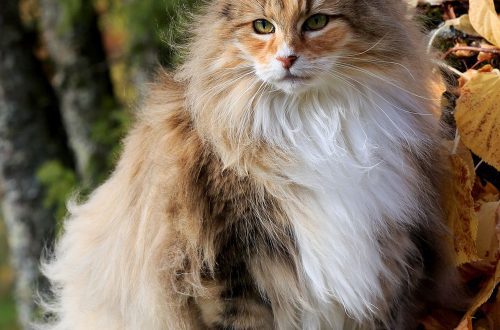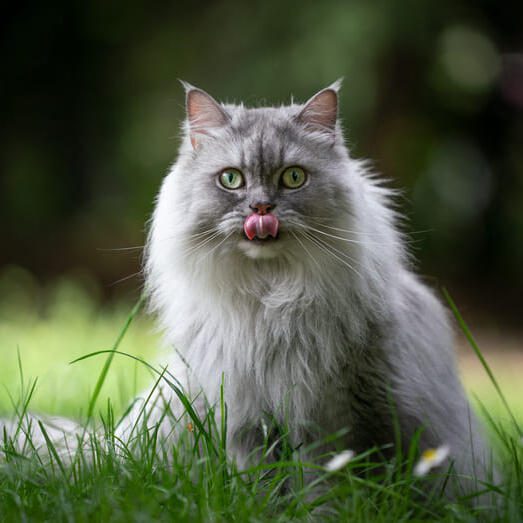
British Longhair Cat
Other names: Brit , lowlander , highlander
The British Longhair is the closest relative of the British Shorthair. Its distinguishing feature of the exterior is a lush, moderately dense coat.
Contents
- Characteristics of British Longhair Cat
- Basic moments
- History of the British Longhair
- British Longhair Cat – Video
- British Longhair breed standard
- Personality of the British Longhair cat
- Education and training
- Maintenance and care
- Health and disease of British Longhair cats
- How to choose a kitten
- British longhair cat price
Characteristics of British Longhair Cat
| Country of origin | UK |
| Wool type | Long |
| Height | 4.5 – 8 kg |
| Weight | about 33cm |
| Age | 9 – 15 years |
Basic moments
- British Longhair cats are called Britons, Lowlanders or Highlanders, and the third name is not entirely correct. The true Highlander is an American experimental cat breed with curled ears.
- The breed is at the beginning of its development and, although its representatives are not forbidden to participate in exhibitions, there is little information in open sources about the British.
- Despite the fact that the “fur coats” of the long-haired British resemble the voluminous “coats” of the Persians, they do not need frequent combing.
- The breed calmly perceives temporary loneliness, so you can go to the store or visit, leaving the fluffy beauty at home, without unnecessary remorse.
- Due to their phlegmatic temperament, lowlanders are recommended for older people, as well as for everyone who is not ready to devote themselves to re-educating an energetic and jumping creature that sets sports records on home furniture.
- British Longhair cats are not averse to eating at any time of the day, so they often overeat and build up absolutely unnecessary fat.
- The breed does not enjoy prolonged physical contact and hugs, therefore it is not suitable for fans of tactilely dependent cats who are ready to doze for hours on their master’s laps.
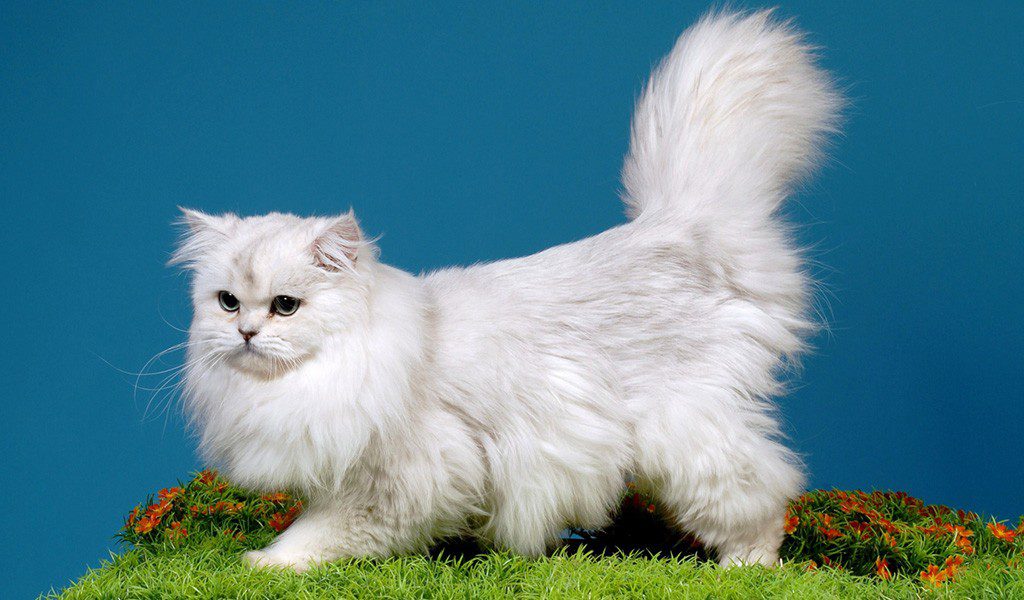
The British Longhair cat is an exemplary and a little lazy “cloud” with an accommodating character and an ineradicable love for delicacies. Building a relationship with this imposing young lady is not difficult at all. The main thing is to provide her with a cozy corner and the opportunity to decide for herself when to purr at the side of the owner, and when to relax in splendid isolation. No, British Longhairs are not at all introverts, they just sometimes need a little more time for an emotional reset.
History of the British Longhair
The past of lowlanders cannot be called ancient, let alone glorious. The breed arose due to the recessive long-haired gene, the carriers of which, according to felinologists, should not be allowed to breed. Moreover, the breeders themselves were to blame for the genetic failure, in the mid-50s they wished to expand the palette of colors of short-haired British by crossing them with Persians.
At first, everything went according to plan: the kittens born from mixed “marriages” inherited the luxurious colors of Persian cats and the short hair of English parents. However, after a few generations, the “gene of increased fluffiness” made itself felt, and the animals began to bring long-haired offspring. Breeders were not ready for such a surprise, so at first they severely rejected fluffy kittens, selling them for a symbolic cost, or even for free, provided that no one would breed such pets.
Soon, the long-haired variation of the British gained a few fans who began to “push” the breed into the TICA and WCF pedigree lists. But since only voluminous fur coats and nothing more were distinguished from the English ancestors of the British, some felinological clubs in Europe and the USA continued to register them as a variety of British cats. At the same time, TICA recognizes Lowlanders, although so far in the status of a new breed.
Important: Today, crossing Persians with British Shorthair and Longhair cats is prohibited. At the same time, matings between lowlanders and traditional British are allowed by some clubs.
British Longhair Cat – Video
British Longhair breed standard
At first glance, the long-haired variation differs from its British short-haired cousins only in a more flashy “outfit”. And if you take a closer look, it becomes clear that this is the rare case when the first impression is not deceptive. Perhaps that is why TICA did not begin to draw up a separate standard for the breed, but simply slightly modified and corrected the existing version intended for British Shorthairs .
Head
The British Longhair is a cat with a round, cheeky muzzle of medium to large size. The chin of the animal is voluminous, the back of the nose is even, short, practically without a stop. Vibrissae in representatives of the breed are clearly marked, convex, rounded.
Eyes
The large round eyes are set moderately wide apart, and the color of the iris matches the shade of the coat. An exception is silver individuals, for which a rich green tone of the iris is preferable.
Neck
A thickened, muscular, short neck passes into round cheeks. In mature cats and cats, this part of the body is distributed in breadth, so it seems that there is no neck as such.
Ears
The ears of the British Longhair are small or medium in size, set on the sides of a rounded feline skull without falling apart. The base of the ear cloth is wide, the tip is moderately rounded.
Body
The body of the British Longhair cat is powerful, wide, smoothly rounded. The chest is also massive. The back is straight, the sides look voluminous.
limbs
The legs of the representatives of the breed are of moderate length, strong and strong. Paws are thick and large. The animal itself looks squat, but not undersized.
Tail
Both shorthaired and longhaired Brits boast thick, medium-length tails with an elegantly rounded tip.
Color
The purebred lowlander has the same colors as its shorthair counterpart, i.e. solid, tortoiseshell, smoky, tabby, bicolor.
Wool
Coat of semi-long type. The hair is dense, elastic, not adjacent. It is desirable to have a richly pubescent collar zone and panties. But the pronounced wadding of wool, as well as thin long hair with a hint of airiness inherent in Persians, are rejected.
Disqualifying vices
Disqualifying vices are defects in behavior and appearance that cast doubt on the breed of the animal. These in British Longhair cats include: jaw misalignment, skin pigmented in tones that do not match the overall color, the wrong eye color, as well as an unreasonably aggressive reaction in response to the action of exhibition specialists. Poor physical shape, as well as severe pain, are also considered sufficient reasons to refuse a pet and its owner to enter the ring.
Personality of the British Longhair cat
The long-haired British cat is the embodiment of delicacy and peacefulness itself. Actually, for these character traits alone, representatives of the breed can be recommended to owners who want to see a trouble-free pet next to them, under whose whims they do not have to adapt. In their addictions, lowlanders are extremely moderate and do not cross the line beyond which misunderstanding and friction with the owner begin. For example, fluffy intellectuals adore human society, but in its absence they do not fall into depression, preferring to quietly philosophize on their favorite couch or in an armchair. By the way, breeders who have many years of experience in breeding the breed claim that the character of their wards is more accommodating and good-natured than that of short-haired British cats .
Cats also have bouts of mild melancholy, during which they are reluctant to contact the owner and members of his family. During such periods, it is better not to pester the pet, giving him the opportunity to take a break from communication – do not worry, this withdrawal will not drag on for a long time. Morning oratorios while waiting for breakfast are not about the British either. From time to time, English “gentlemen” are able to remind themselves of themselves with a quiet, slightly resonant “meow”, but they certainly will not yell for the sake of attracting attention or in confusion of feelings.
But the long-haired Briton will not refuse to play, and this comrade with the same enthusiasm perceives both entertainment in the company of a person and independent “tormenting” of a clockwork mouse or ball. Growing up, British Longhairs become more phlegmatic and slow down in terms of physical activity, so anyone who is afraid of hurricane cats, dashingly diving from the closet to the sofa and overturning flower pots of any weight, can acquire such a pet.
Purrs treat children patiently and condescendingly, provided that the latter do not annoy the animal too much with attention. When bringing a British Longhair cat into the house, notify the children that the breed does not like strong hugs, as well as a noisy, nervous environment. We are ready to tolerate lowlanders and the neighborhood of a dog. True, in order for the relationship between the dog and the representative of the purring brethren to become extremely peaceful, it is better that acquaintance and grinding to each other take place at a young age.
Education and training
The British are not the most energetic breed, so it is not advisable to learn circus numbers with them in the style of “we are from the Kuklachev Theater”. But it is necessary to correct the behavior of the cat, instilling in him the norms of household etiquette. Moreover, after a year, lowlanders lose their craving for knowledge and stubbornly do not want to be reeducated.
At first, special literature will help out – the books “Kitten Education” by E. Filippova, “Bad Habits of Cats. Education without stress” by A. Krasichkova and others. If the kitten came from a breeder who did not bother to instill toilet skills in him, get ready to take on this job. Fortunately, British Longhairs are naturally clean and quickly figure out that it is much more pleasant to do “wet deeds” in a pile of dry filler than on a slippery floor.
Be sure to take into account the subtle mental organization of the breed – the British tend to hush up and absorb insults, which negatively affects their psyche. So if at first the cat makes mistakes and goes to the toilet in the wrong place, it’s better to close your eyes to the odorous “lakes” and try alternative methods of accustoming to the tray – put a rag that smells like cat urine in the box, or rustle the filler in the presence of a kitten. And, please, no grandma’s methods, which involve poking the baby with his nose into a puddle – no matter what the homegrown experts in cat psychology say, such educational moments do nothing but harm. Remember, a kitten is not able to endure for a long time and often forgets which room its toilet is in, so at first it is recommended to put a couple of trays in the house in order to avoid “wet incidents”.
British Longhair cats are greedy for positive incentives, so for any achievement, praise the ward from the heart. True, here it is important to distinguish between the actual achievements and norms of behavior. If for once the cat ignored the sofa and did not sharpen its claws on its back, this is not a reason to rush for a tasty reward for him.
It is better to reduce punishments to a minimum, but if the purr begins to become impudent and encroach on the forbidden, the prankster will have to besieged. The best method of influence is intonation selection. If you categorically and firmly say “No!” the cat sitting on the table, at the same time tapping his palm on the tabletop, he will understand this. Do not even consider spanking a pet with newspapers, a hand or a slipper that has turned up – you can’t beat any cat, and even more so an intelligent and impressionable British longhair.
Maintenance and care
Toys, a sisal scratching post, a couch, bowls for food and drink – the property that any cat should have. It is important to change the filler in the British Longhair cat’s toilet in a timely manner. Representatives of this family are demanding tidies and will never go to the tray with their own waste products. If you wish, you can buy a play complex for your pet, and not necessarily a high one – the breed does not suffer from a mania for conquering peaks. At least once a day, it is advisable to take the cat outside to get some fresh air, or to equip a corner on a balcony covered with a net, where she can replenish her supply of impressions.
Hygiene
The elastic, lagging behind the body hair of the British longhair is different from the hair of the Persian cats, therefore it does not tangle so easily and does not stray into tangles. However, you will need to brush your pet at least once a week. Individuals permanently residing in the house shed, not seasonally, but throughout the year, so if you notice that the cat’s hair is shedding more intensely than usual, it is better to increase the frequency of combing.
The eyes of the British Longhair are sensitive and may leak, which is especially noticeable in kittens. It’s not worth making a tragedy out of this phenomenon, just remove the mucous lumps with a clean cotton swab dipped in phytolotion, not forgetting to monitor the intensity of the discharge. If too much flows from the eyes, this is not a reason to grab strong anti-inflammatory drops without consulting a specialist, as there is a risk of worsening the situation.
The claws of lowlanders, like those of their shorthair relatives, grow unevenly. Breeders recommend shortening the claws on the front paws every 2-3 weeks, and on the hind legs no more than once a month. It is necessary to clean the ears as they get dirty, without falling into perfectionism. That is, if a cat has a large amount of secretion, it is removed with a cotton pad soaked in hygienic lotion or hydrogen peroxide. If there is little sulfur, it is better to close your eyes to its presence, because the more often the ear is cleaned, the more intensively the excretory glands work.
If the pet does not eat dry food that acts as an abrasive for the teeth, get ready to systematically clean its oral cavity with zoopaste and a brush. British longhairs themselves do not respect such actions, so often a second person has to be involved in processing, and sometimes the animal is “swaddled” so that it does not interfere in the process of neutralizing food plaque.
An alternative to classic brushing is a liquid toothbrush. This is the name of special solutions added to drinking water and performing the function of a disinfectant and plaque-dissolving agent. In especially neglected cases, when the pet managed to acquire tartar, you will have to contact the veterinarian. But since in zoos such procedures are often carried out under anesthesia, it is better not to neglect regular home cleaning.
Feeding
There are no strict guidelines to feed the British Longhair only “dry” or natural food, so each breeder chooses his own ideal option. The main advantage of industrial feeds over natural products is their balance and availability. Purring, “sitting” on dry food, does not need additional vitamins, however, provided that this food is at least a super-premium class.
The natural menu of long-haired British cats traditionally includes:
- turkey, lamb, beef and chicken meat, heat-treated or frozen;
- boiled offal;
- fermented milk products and milk (only for kittens);
- quail eggs.
It is better to give fish less often and in the form of boiled fillets, since some species contain substances harmful to the cat’s body. Cereals (buckwheat, rice) are mixed with meat in limited quantities. They do the same with boiled and raw vegetables – pumpkin, carrots, zucchini. Quail eggs can be replaced with chicken yolk. You can also cook an omelet with it.
Up to six months, milk is present in the diet of British Longhair kittens, but then its consumption should stop – the body of an adult animal does not produce enzymes that break down milk protein. Be sure to grow on the windowsill or buy young grass for the cat – with its help, the animal gets rid of the lumps of wool that got into the stomach when licking the body.
It is useful to periodically feed cats on a natural menu with vitamins and complexes with taurine, but it is better if they are prescribed by a veterinarian after an examination. Some breeders introduce home-made bioadditives into the diet, such as decoctions of wild rose and nettle, although they are not always able to cover the pet’s need for trace elements and vitamins. Three-month-old Britons are fed up to four times a day, six-month-old individuals are transferred to two or three meals a day.
Health and disease of British Longhair cats
Longhair British cats live up to 18-20 years. They have few health problems, but given the evolving status of the breed, it is logical to assume that some of the ailments may manifest themselves over time. In the meantime, cats are suffering from diseases such as hypertrophic cardiomyopathy and polycystic kidney disease. As for obesity, to which diligently fed individuals are prone, it is easier to deal with it in the early stages. Running fat cats have time to accumulate a sufficient number of serious ailments, including arthritis, diabetes and hepatic lipidosis.
How to choose a kitten
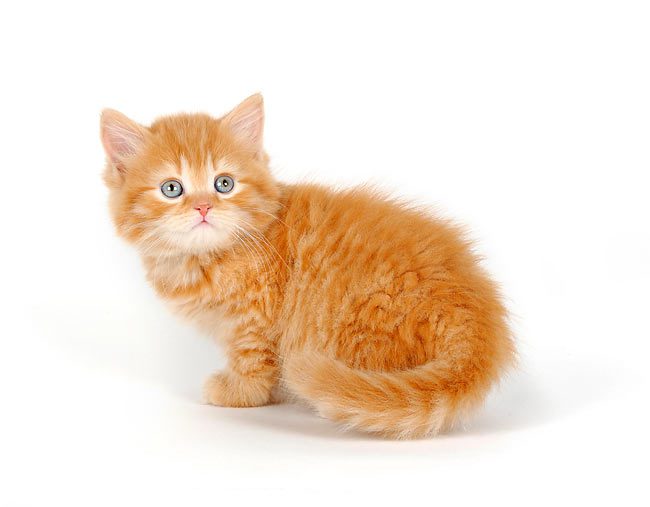
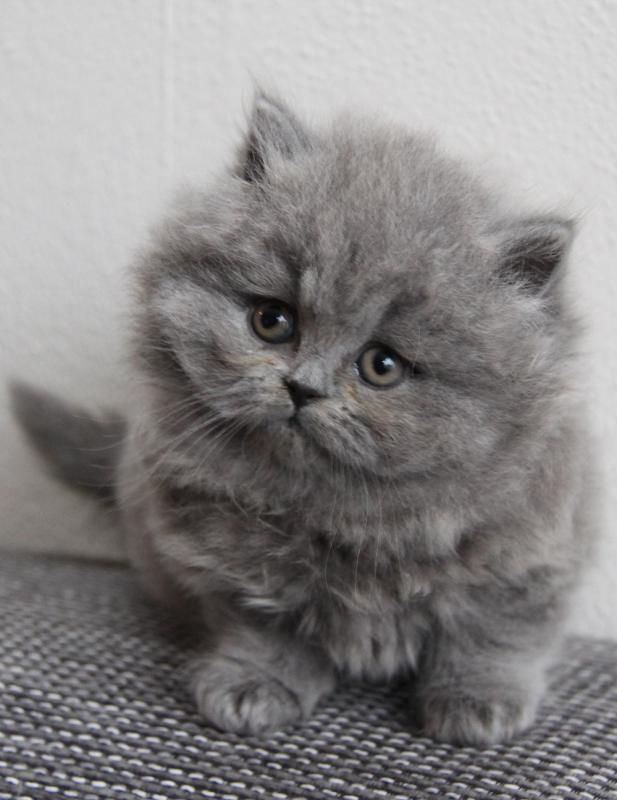


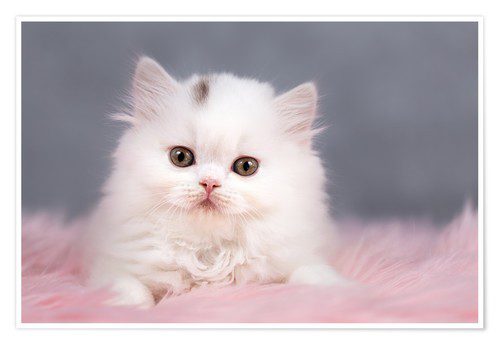
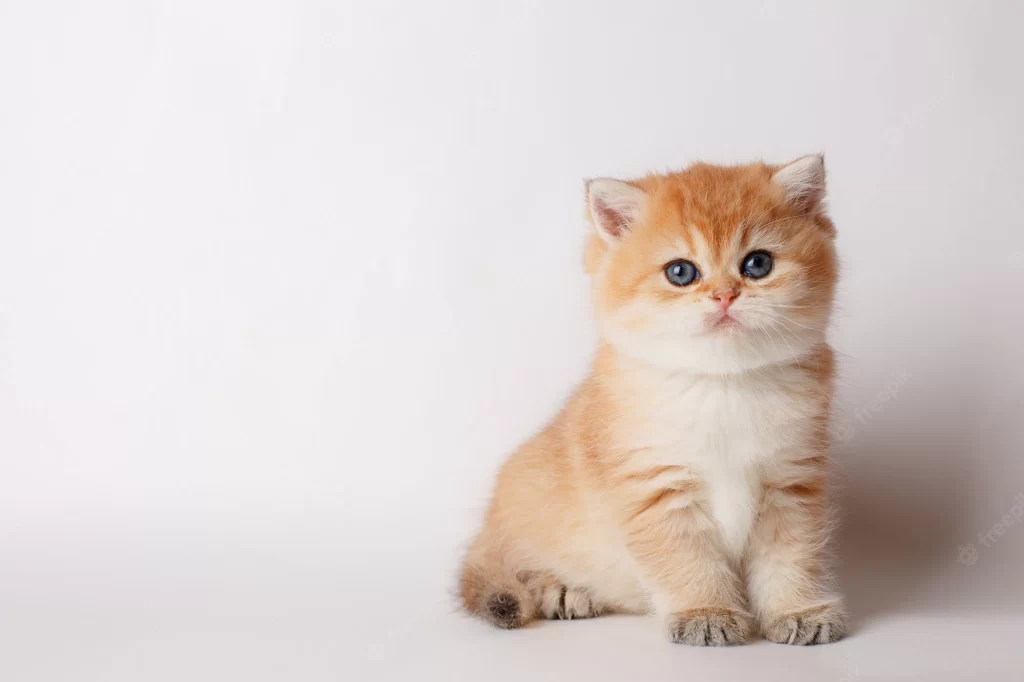
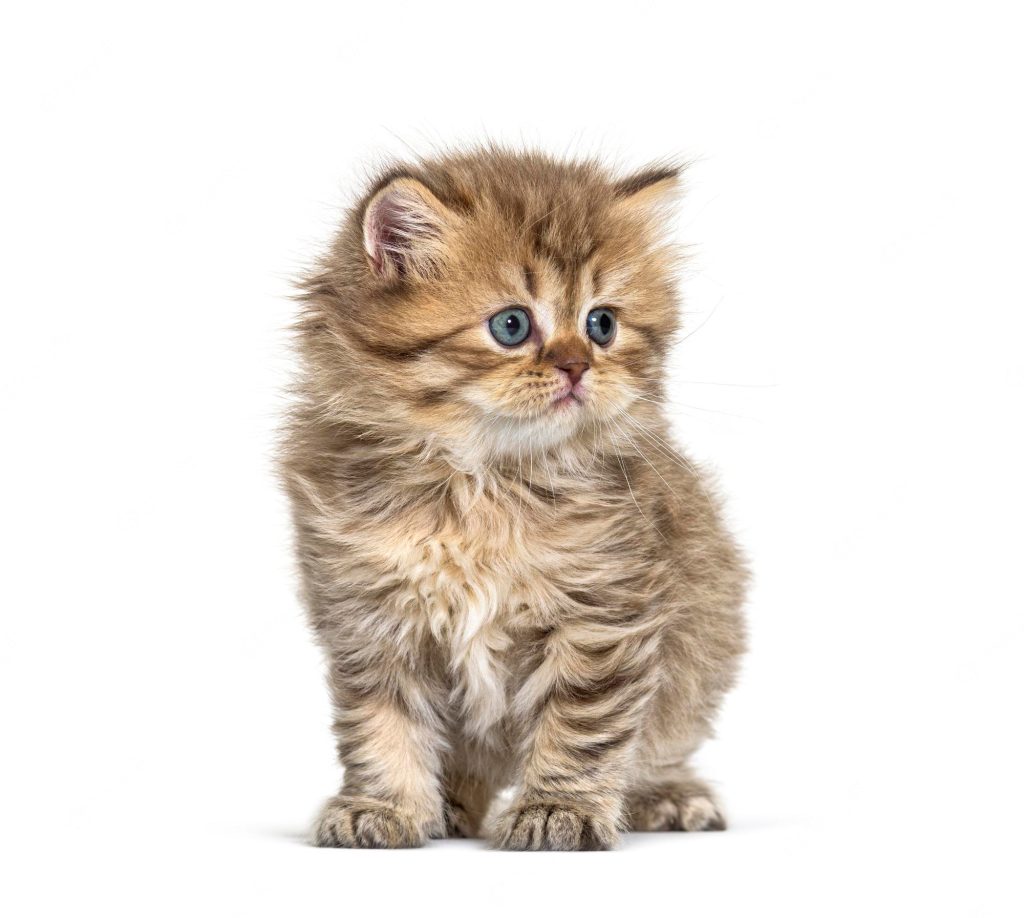
- As the breed continues to gain popularity, there will be unscrupulous sellers selling problem animals on the buyer’s path. In order to acquire a kitten, it is better to be like breed shows where professionals gather.
- Fans of more frisky pets are advised to opt for a male kitten. Long-haired “British girls” are calmer and more phlegmatic than males.
- Look for a cattery registered in the WCF feline system – such institutions value their reputation and do not breed animals without pedigrees. In addition, the websites of most of them contain photos and documents of manufacturers, according to which you can get a relative idea of the appearance of future litters.
- British Longhair kittens are sold from the age of three months. If the breeder offers to give the baby away earlier, there is a catch.
- In three-month-old kittens, the conformation potential is practically not visible, therefore it is better to take older individuals (4-6 months) for exhibitions, in which the color of the iris has been determined and the first molt has passed.
- Assess the living conditions of the cat and its offspring. The nursery should be clean and warm, and the animals should look healthy and well-groomed.
- View advertisements for the sale of child support. They are given by cat owners who receive a kitten as a payment for mating their ward with a cat from a cattery. Buying such kittens is quite acceptable, especially since the alimentary animal is given first, and usually this is the cutest kitten in the litter. The main thing is to check the purity of the pedigrees of the parents.
British longhair cat price
In the USA, you can buy a long-haired British for 800-1200 dollars (approximately – 900 – 1400$). In Russia, lowlanders with the right to subsequent breeding (breed class) cost about the same. In addition, the Internet is full of ads for the sale of British longhair kittens at tempting prices – up to 15,000 rubles. Usually such sales are arranged by adepts of commercial breeding, whose fluffy “product” has dubious pedigrees, or even does without them at all.



